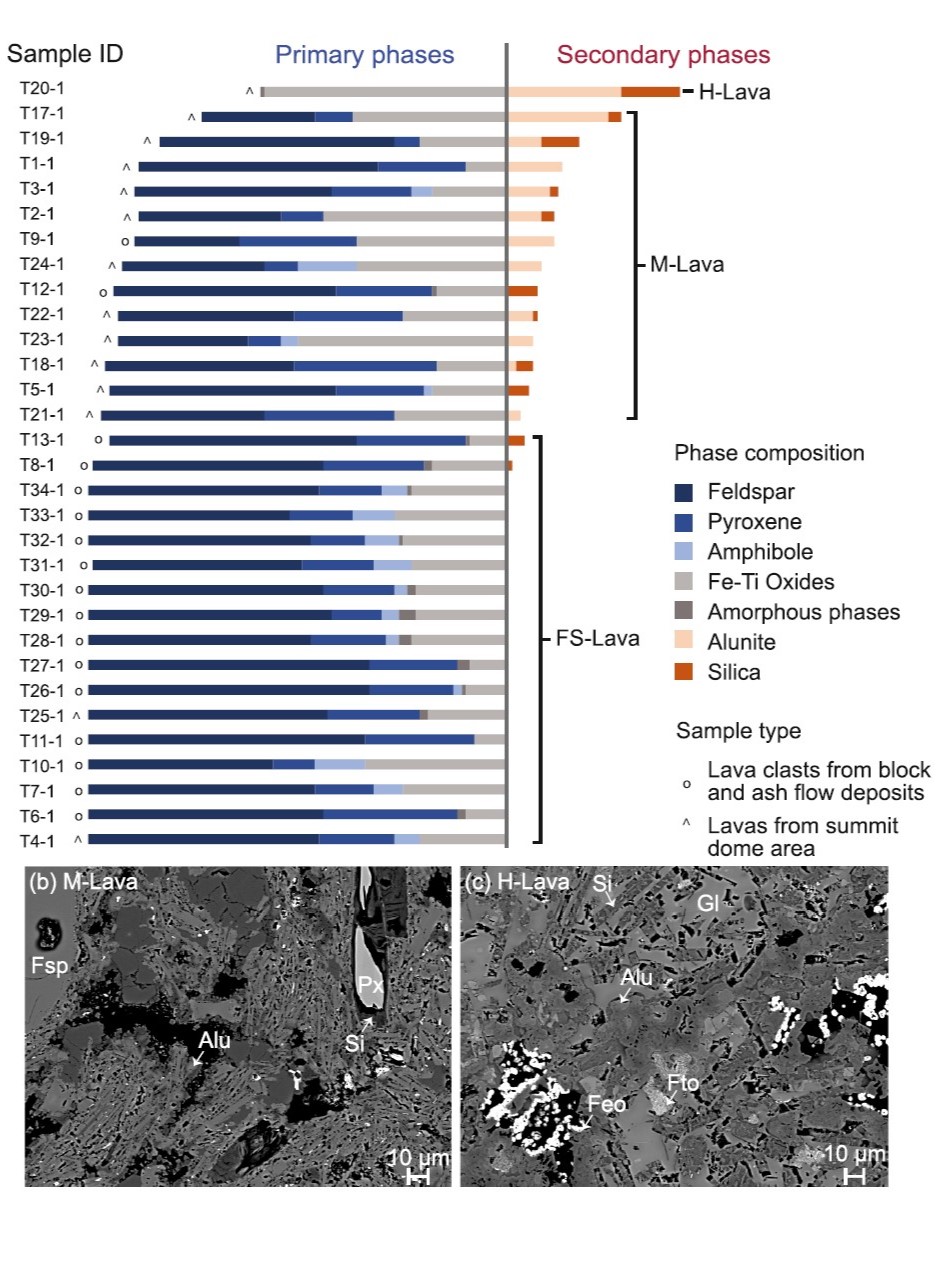
Petrophysical and elastic properties of altered lavas from Mt. Taranaki: Implications for dome stability
Information
Journal of Volcanology and Geothermal Research | 2022
Authors:
Shreya Kanakiya, Ludmila Adam, Michael C. Rowe, Lionel Esteban, Geoffrey A. Lerner, Jan M. Lindsay
DOI: https://doi.org/10.1016/j.jvolgeores.2022.107693
In this project, we investigated the role of hydrothermal alteration in lava dome collapses at Mt. Taranaki., an active stratovolcano in New Zealand. We measured the mineral composition, crystallinity, porosity, permeability, and stiffness of variably altered rocks collected from the summit dome area and dome collapse deposits (block and ash flows) of the volcano. Our results showed that altered lavas were similar or even stiffer (stronger) than fresh lavas of similar porosity, due to precipitation of strong secondary minerals like silica and alunite instead of weak minerals like clays. This finding suggests that the role of hydrothermal alteration in the stability of lava domes is not merely dependent on the degree of hydrothermal alteration but also on the type. Alteration observed in our study shows that the dome weakening due to hydrothermal alteration is unlikely to have been the cause of past collapses. Instead, alteration-related precipitation of secondary minerals in permeable pathways could have caused pressurization by restricting fluid flow.
Highlights
-
Hydrothermal alteration changes the mineralogy, fluid pathways, and crystallinity of lavas from Mt. Taranaki.
-
The stiffness of the rock does not always reduce due to alteration.
-
The type of secondary mineral assemblage can be an important controlling factor in determining rock strength and dome stability.
Frequently Asked Questions
- Where can I find the samples used in this study?
-
The samples are at the Physics of Rock Lab at the University of Auckland.
- Where can I find the data from this study?
-
All data from this study are available in the online open-access repository - figshare. Citation: Kanakiya, S. (2022). Petrophysical and corresponding elastic and magnetic properties of hydrothermally altered lavas from Mt. Taranaki, New Zealand. http://doi.org/10.17608/k6.auckland.14706930